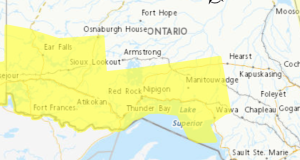 The Ontario government is investing $52.5 million to recruit, retain and support over 3,700 more frontline health care workers and caregivers to ensure our health care system can meet any surge in demand, while continuing to provide safe and high-quality care to patients and long-term care residents. This investment is part of the province’s COVID-19 fall preparedness plan, Keeping Ontarians Safe: Preparing for Future Waves of COVID-19.
The Ontario government is investing $52.5 million to recruit, retain and support over 3,700 more frontline health care workers and caregivers to ensure our health care system can meet any surge in demand, while continuing to provide safe and high-quality care to patients and long-term care residents. This investment is part of the province’s COVID-19 fall preparedness plan, Keeping Ontarians Safe: Preparing for Future Waves of COVID-19.
Details were provided by Premier Doug Ford and Christine Elliott, Deputy Premier and Minister of Health.
“It’s the thousands of nurses, personal support workers, and other frontline workers who have made the difference in the fight against COVID-19,” said Premier Ford. “Today’s significant investment will allow us to recruit, retain, and quickly deploy a militia of health care heroes, caregivers, and volunteer professionals to care for our seniors and most vulnerable and ensure our health care system is prepared to deal with any outbreaks or surges in cases.”
“Retaining and increasing the number of frontline health care workers in our continuous fight against COVID-19 is critical,” said Minister Elliott. “We are taking further action to ensure our frontline health care workers are supported, and the health care sector has the staff to provide timely, high-quality care.”
In order to increase and stabilize the health care workforce, the province is investing an additional $26.3 million to support personal support workers (PSWs) and supportive care workers, including:
- $14 million for the Personal Support Worker training funds to continue training PSWs in the home and community care and long-term care sectors;
- $10.3 million for the new Personal Support Worker Return of Service Program, to recruit and retain recent graduates to work in long-term care homes and in the home and community care sectors. This program will provide a $5,000 incentive to 2,000 recent graduates for a six-month commitment to work in these settings;
- $1.3 million to train 160 supportive care workers to provide basic home support services; and
- $700,000 in accelerated PSW training for 220 students with prior health experience to practice in Ontario.
The province is investing an additional $26 million to support nurses, including:
- $18 million for Ontario’s Nursing Graduate Guarantee program, which provides full-time salary and benefits for over 600 nurses with a focus on recruiting in areas of need such as long-term care homes and acute care settings; and
- Up to $8 million to add over 800 nurses to the health system in areas of need across the province.
The province is supporting frontline workers, families and caregivers by:
- Investing $200,000 to improve the matching algorithm for the Ontario Matching Portal, which will enable employers to get faster matches that best meet their needs;
- Expanding training, tools and resources available to frontline workers across the social services sector; and
- Continuing to update visitor policies for congregate care settings, including long-term care, that promote family and caregiver involvement to support better care and reduce isolation.
The province’s COVID-19 fall preparedness plan, Keeping Ontarians Safe: Preparing for Future Waves of COVID-19, will help the province quickly identify, prevent and respond to any scenario in order to protect communities.
The Keeping Ontarians Safe plan will:
- Recruit, retain, train and support health care workers, while also continuing to engage families and caregivers;
- Implement the largest flu immunization campaign in Ontario’s history;
- Maintain strong public health measures, including continued expansion of testing and case and contact management;
- Quickly identify, manage and prevent COVID-19 outbreaks;
- Accelerate efforts to reduce health service backlogs; and
- Prepare for surges in COVID-19 cases.
Ontario has already taken actions to prepare the health system and support frontline care providers:
- Developed a health workforce matching portal which has helped match skilled frontline health care workers with over 1,100 matches (including over 650 in long-term care) across the health system in need of assistance;
- Strengthened infection prevention and control supports to help providers and care settings in greatest need, including tools, training and resources to support long-term care and other congregate settings;
- Released guidance and directives from the Chief Medical Officer of Health to ensure consistent approaches to protecting health care workers and patients, based on the best evidence available;
- Increasing the supply and availability of personal protective equipment, including recently announced domestic manufacturing capacity of N95 respirators to keep our health care workers safe; and
- Updated the long-term care visitor policy to clarify guidance about visits from caregivers to help meet the care needs of residents.
- Ontario and Marten Falls First Nation Sign Historic Agreement to Unlock Ring of Fire - November 28, 2025
- Ontario Investing in Winter Roads Network - November 25, 2025
- Ontario Launches Feasibility Study to Build East-West Pipeline and Energy Corridor - November 3, 2025
 Wawa-news.com You can't hear the 'big picture'!
Wawa-news.com You can't hear the 'big picture'!

